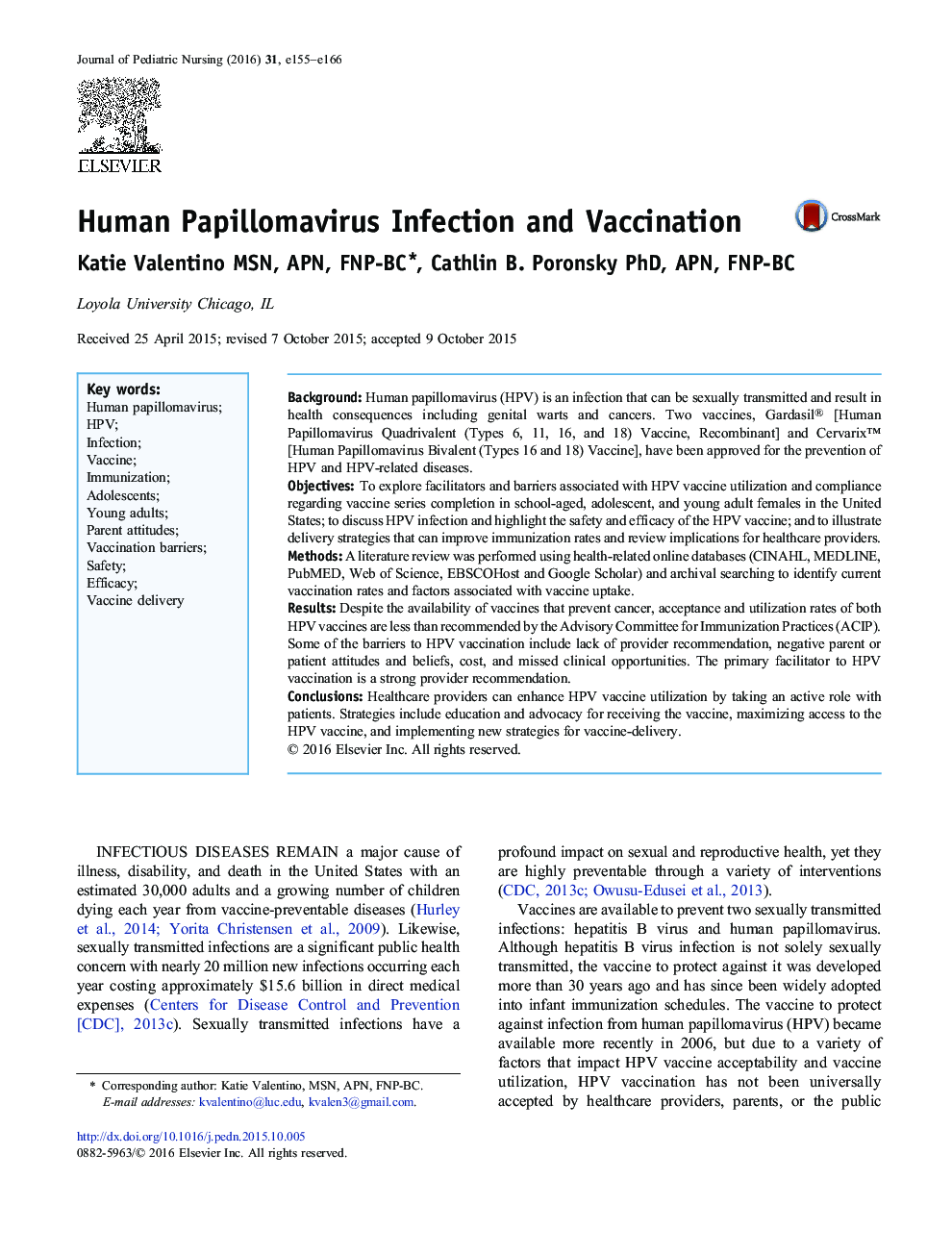| Article ID | Journal | Published Year | Pages | File Type |
|---|---|---|---|---|
| 2664117 | Journal of Pediatric Nursing | 2016 | 12 Pages |
•There are numerous barriers to HPV vaccination in children, adolescents, and young adults. We identified that many parents and adolescents were not knowledgeable about HPV nor were they aware of the HPV vaccine, or they do not have enough information to make an educated decision about the HPV vaccine.•The perceived benefits of HPV vaccination were found to be a substantial predictor of HPV vaccination. The greatest perceived benefit to HPV vaccination among patients and parents was the potential to prevent cancer, namely cervical cancer.
Background:Human papillomavirus (HPV) is an infection that can be sexually transmitted and result in health consequences including genital warts and cancers. Two vaccines, Gardasil® [Human Papillomavirus Quadrivalent (Types 6, 11, 16, and 18) Vaccine, Recombinant] and Cervarix™ [Human Papillomavirus Bivalent (Types 16 and 18) Vaccine], have been approved for the prevention of HPV and HPV-related diseases.ObjectivesTo explore facilitators and barriers associated with HPV vaccine utilization and compliance regarding vaccine series completion in school-aged, adolescent, and young adult females in the United States; to discuss HPV infection and highlight the safety and efficacy of the HPV vaccine; and to illustrate delivery strategies that can improve immunization rates and review implications for healthcare providers.MethodsA literature review was performed using health-related online databases (CINAHL, MEDLINE, PubMED, Web of Science, EBSCOHost and Google Scholar) and archival searching to identify current vaccination rates and factors associated with vaccine uptake.ResultsDespite the availability of vaccines that prevent cancer, acceptance and utilization rates of both HPV vaccines are less than recommended by the Advisory Committee for Immunization Practices (ACIP). Some of the barriers to HPV vaccination include lack of provider recommendation, negative parent or patient attitudes and beliefs, cost, and missed clinical opportunities. The primary facilitator to HPV vaccination is a strong provider recommendation.ConclusionsHealthcare providers can enhance HPV vaccine utilization by taking an active role with patients. Strategies include education and advocacy for receiving the vaccine, maximizing access to the HPV vaccine, and implementing new strategies for vaccine-delivery.
